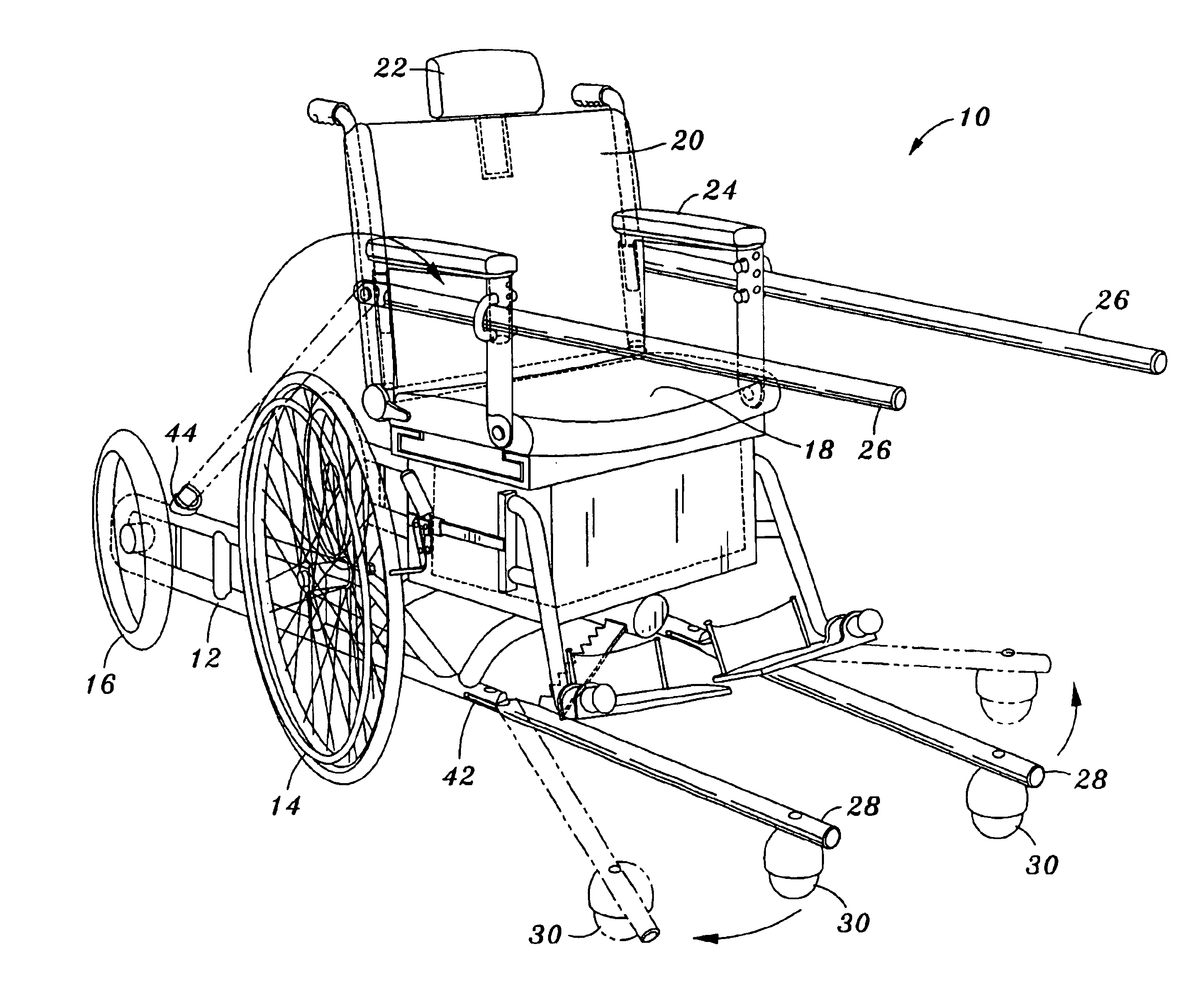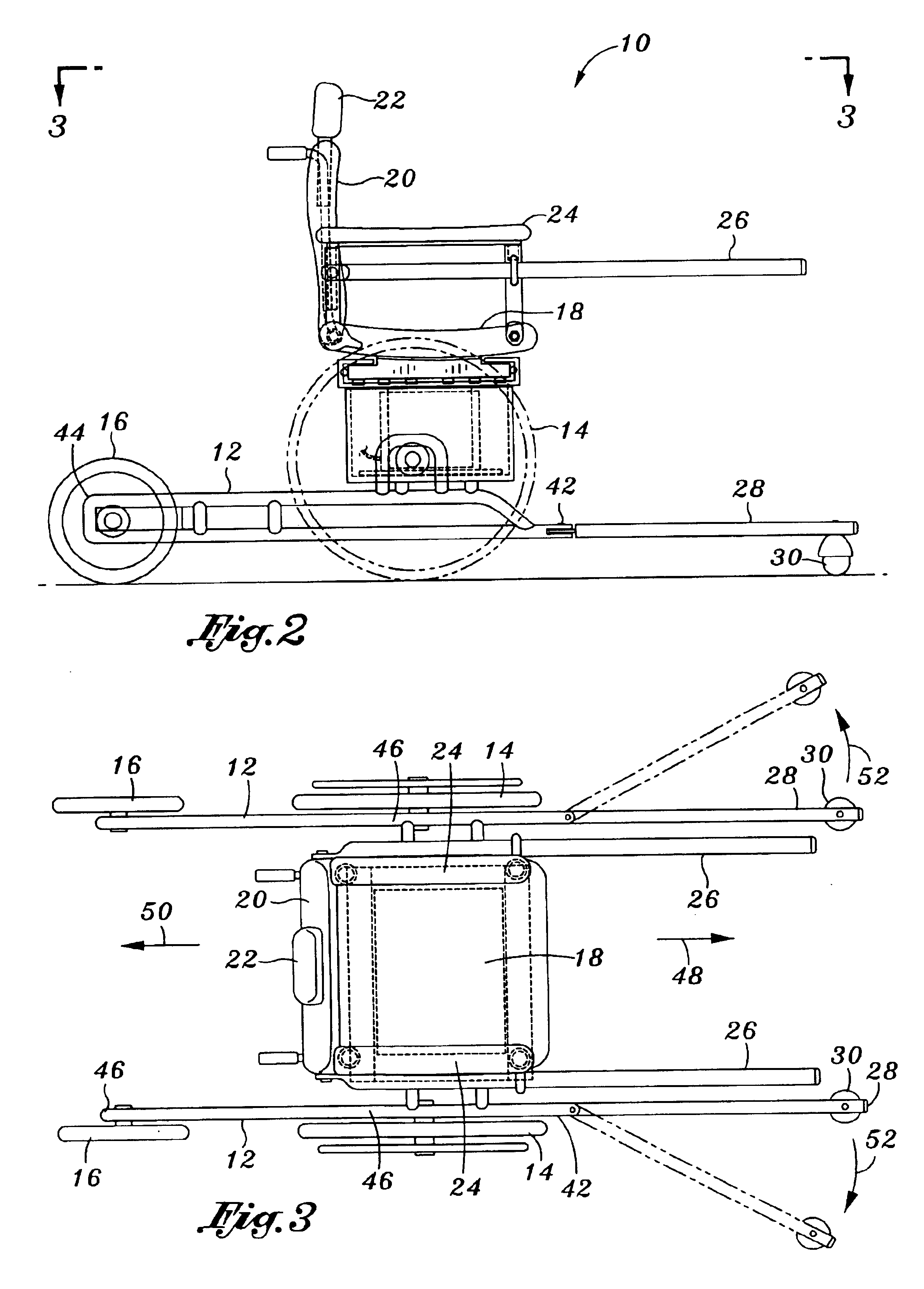Transport chair for a patient
a technology for transporting chairs and patients, applied in the field of wheelchairs, can solve the problems of high nursing home cost, patient cannot be without a caregiver the patient cannot be able to use the wheelchair for more than six hours, so as to prevent the wheelchair from being tipped
- Summary
- Abstract
- Description
- Claims
- Application Information
AI Technical Summary
Benefits of technology
Problems solved by technology
Method used
Image
Examples
Embodiment Construction
[0029]Referring now to the drawings wherein the showings are for purposes of illustrating preferred embodiments of the present invention and not for purposes of limiting the same, FIG. 1 is a perspective view of a wheelchair 10 of the present invention. The wheelchair 10 is comprised of a support frame 12 to which is attached at least two main wheels 14, a seat base 18 and at least one security beam 26. The wheelchair 10 shown in FIG. 1 comprises additional components including a pair of transit wheels 16, a pair of arm rests 24, a seat back 20 and a head rest 22. The seat base 18 is configured for selectively raising or lowering a patient between a first level 54 and a second level 56. Such selective raising and lowering may be accomplished through a lifting mechanism 32, as can be seen in FIG. 2 and in FIGS. 10 and 11.
[0030]Advantageously, as will be discussed in greater detail below, the combination of the movable seat base 18 with the at least one security beam 26 allows a patie...
PUM
 Login to View More
Login to View More Abstract
Description
Claims
Application Information
 Login to View More
Login to View More - R&D
- Intellectual Property
- Life Sciences
- Materials
- Tech Scout
- Unparalleled Data Quality
- Higher Quality Content
- 60% Fewer Hallucinations
Browse by: Latest US Patents, China's latest patents, Technical Efficacy Thesaurus, Application Domain, Technology Topic, Popular Technical Reports.
© 2025 PatSnap. All rights reserved.Legal|Privacy policy|Modern Slavery Act Transparency Statement|Sitemap|About US| Contact US: help@patsnap.com



